TREES, SHRUBS & MEADOWS ON A SUNNY AFTERNOON
The weather was warm and sunny. Quite typical for the first half of June.
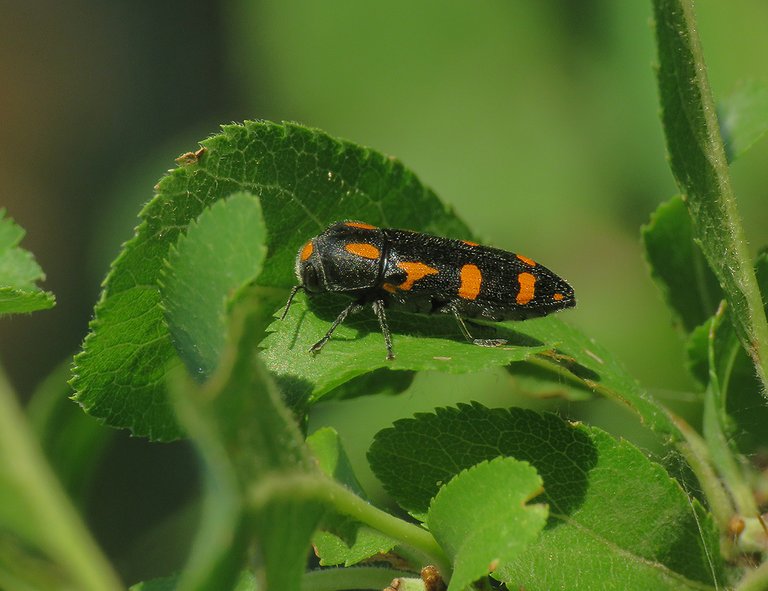
10th of June 2022 is the exact date, and I was walking up & down along the wall of dense vegetation that grows around one of the many meadows in the area between the village of Shishan and the place where I live. In this opening photograph, you can see a colorful beetle from the Buprestidae family. Beetles from that family are commonly known as jewel beetles.
Ptosima undecimmaculata is the scientific name of this specific jewel beetle. Can't tell you its common name. If it has one.
The beetle was found and photographed on the small Prunus spinosa tree.
In its larval stage, Ptosima undecimmaculata feeds and develops in the wood of dead trees or shrubs, and sometimes, in the living branches of plants from the Rosaceae family. Especially from the genus Prunus of that family.
The adults eat the bark of the twigs.
In this triptych, you can see the unripe fruits of another small tree.
The Crataegus germanica. This plant grows as a large shrub or small tree, often in sunny places where the forest meets the open space of the meadow. Fruits are edible when soft and seemingly rotten. It's a kind of wild fruit great for jam and marmalade. These unripe ones are hard as wood or stone.
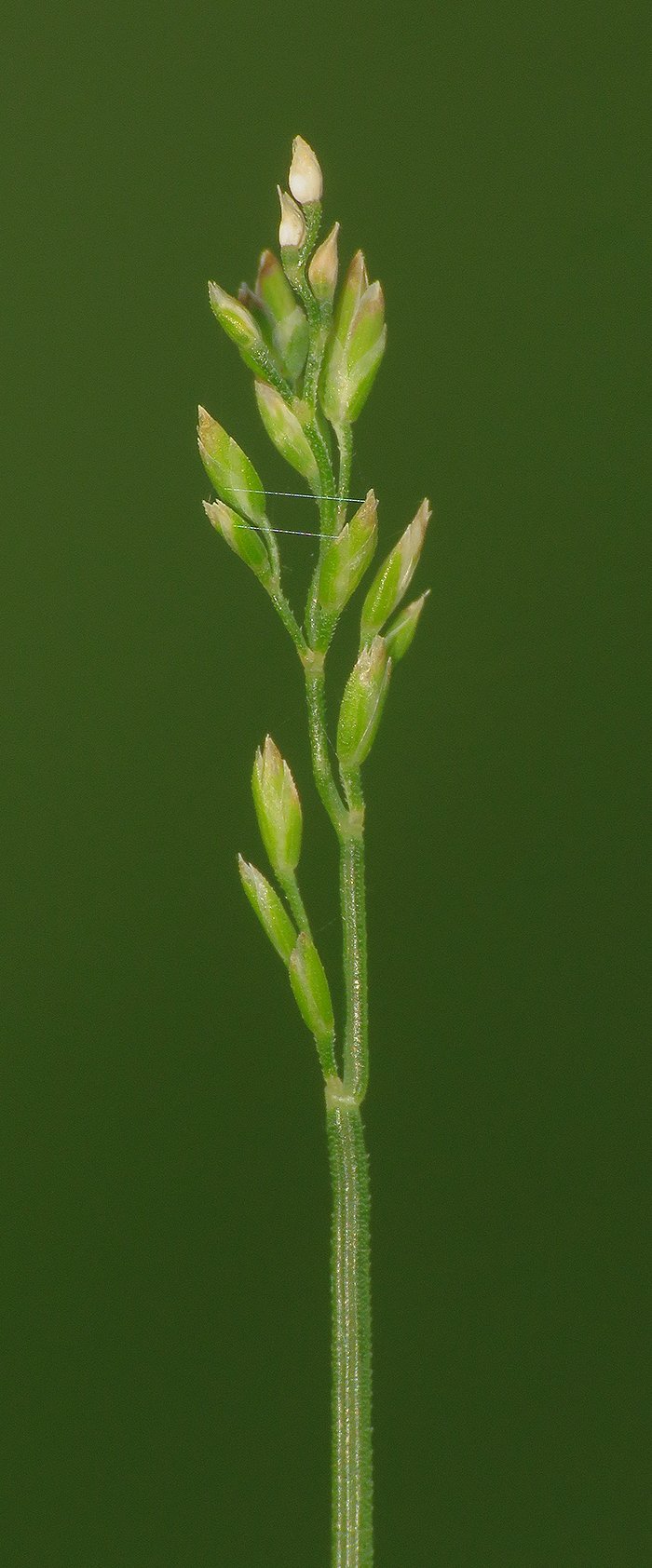
This gracile grass, the Poa infirma, was photographed ten or twelve meters further, in the meadow.
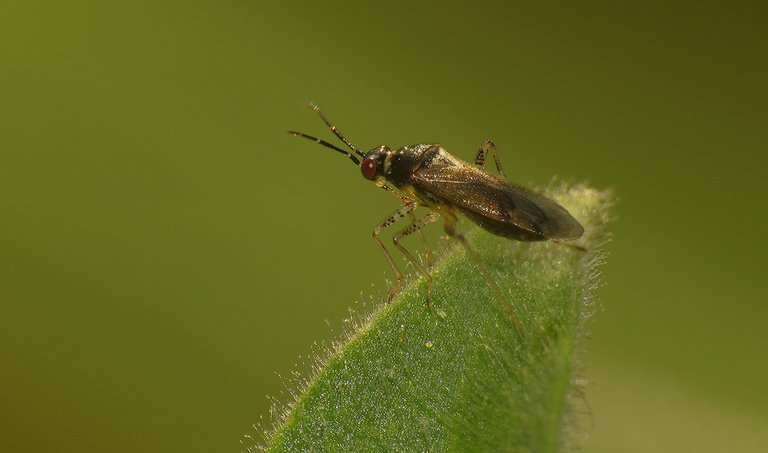
There, among various kinds of grass and herbaceous plants, I found quite a few insects.

This small bug is a member of the Miridae family.
Dicyphus globulifer is the name of this very small species.
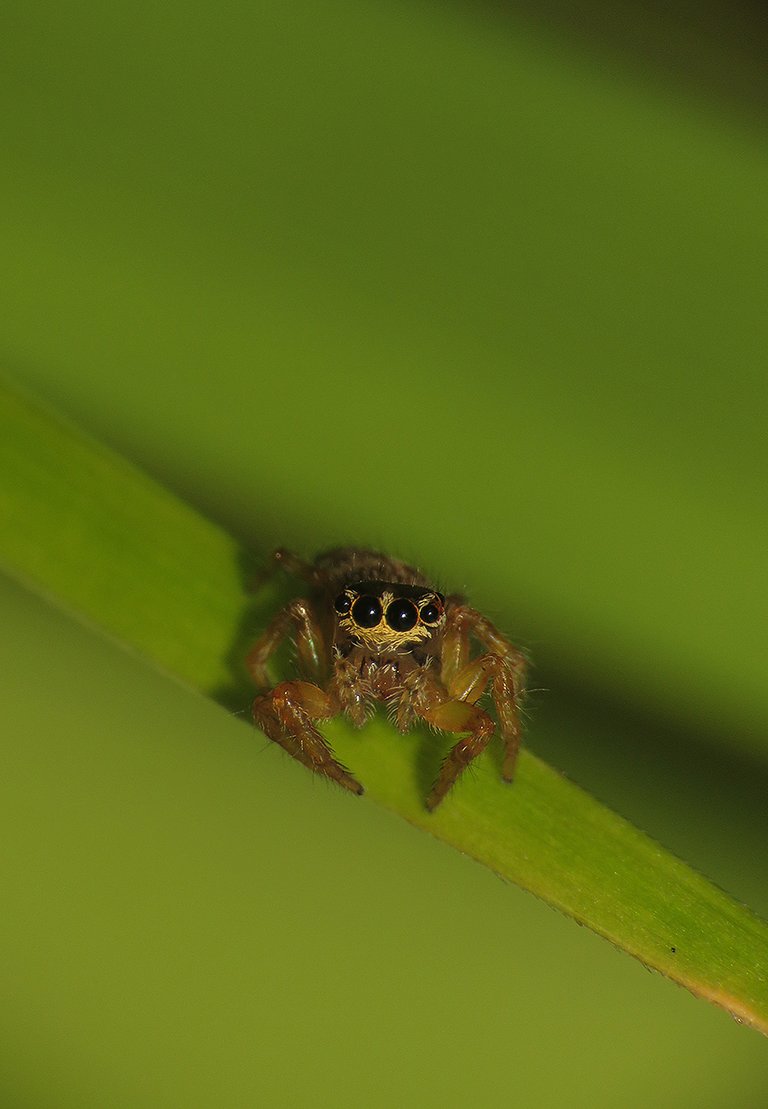
Not far from there I came across a jumping spider that was staring at me. In this case, I wasn't able to identify the species.
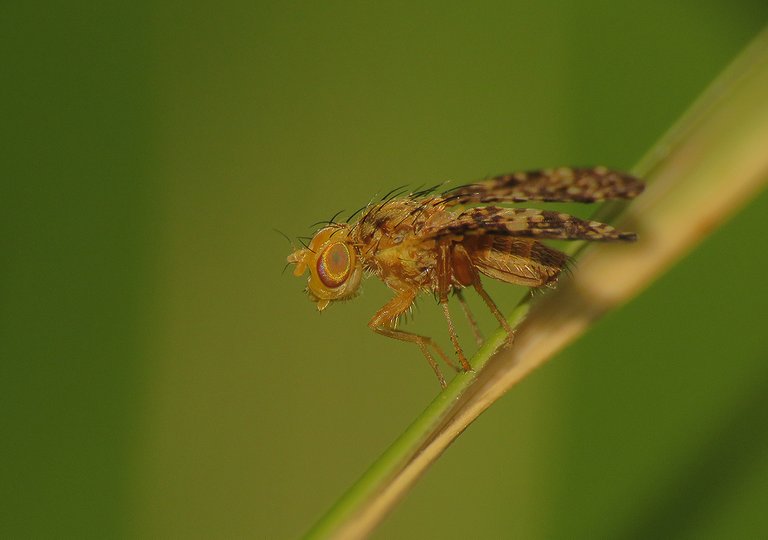
This small fly with lovely painted wings is probably a member of the Tephritidae family, but ...
... but I'm not completely sure about that.
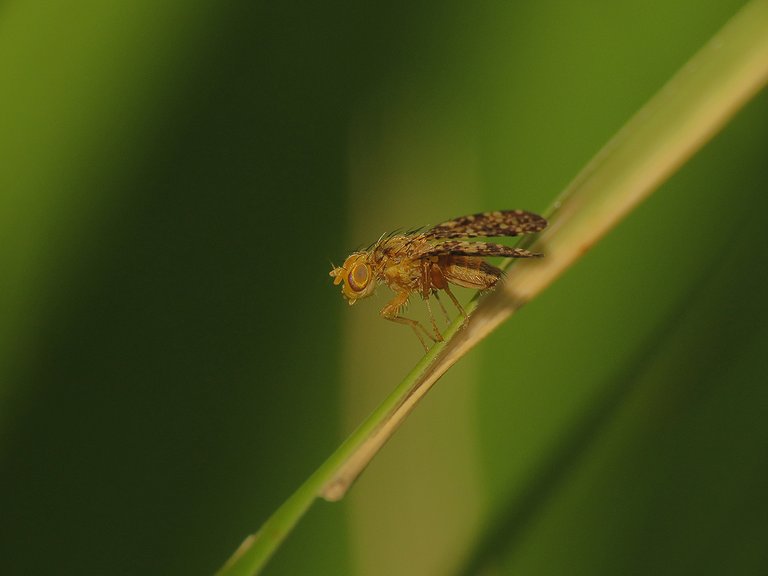
I photographed the fly, and then, forty or fifty meters further, more or less in the middle of the meadow ...
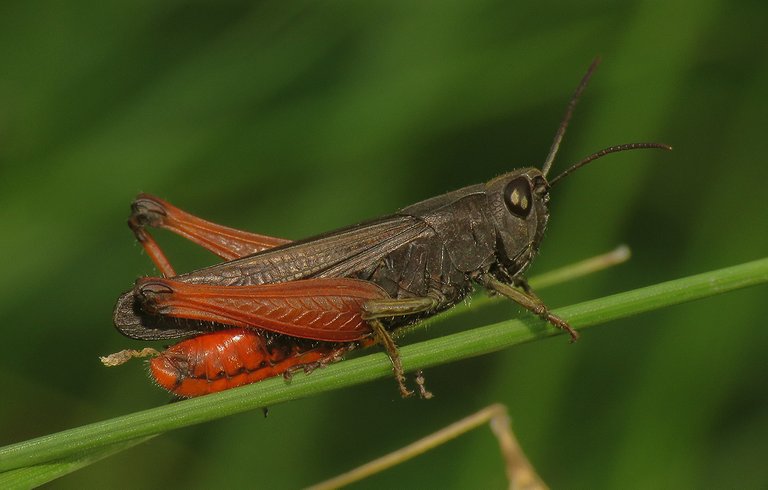
... I came across this grasshopper. Grasshoppers from this species, the Omocestus rufipes, come in quite a few combinations of markings and colors. The black & red ones are the most stylish, in my opinion.
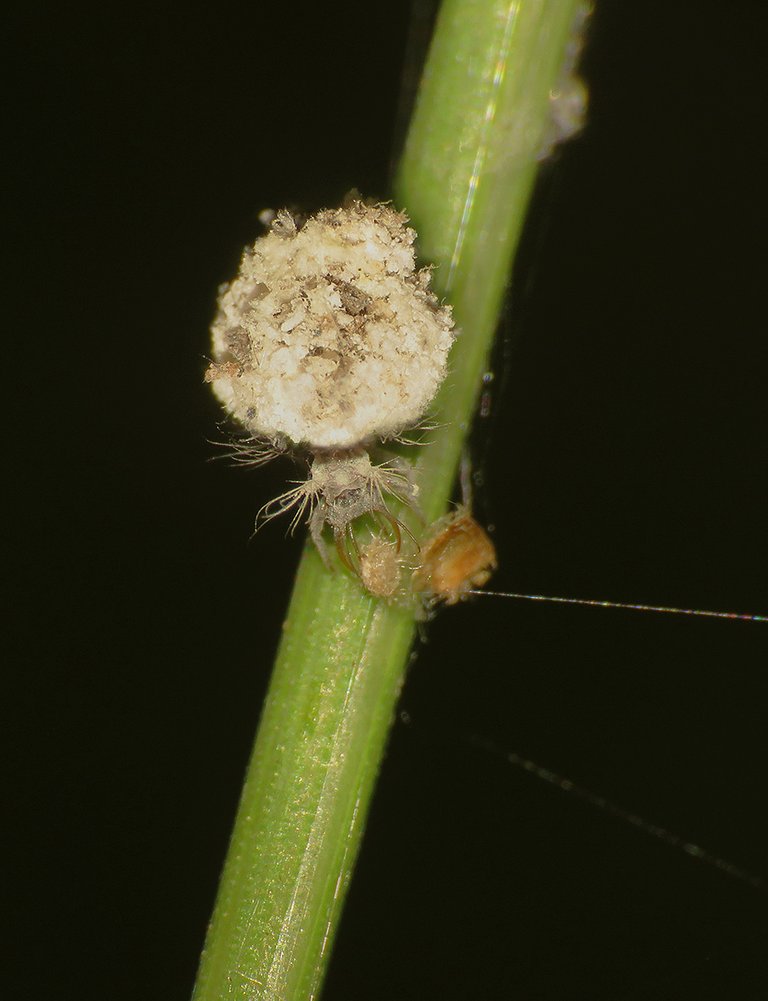
This is the young larva of the common green lacewing (Chrysoperla carnea). The small predator was walking up and down the stems of herbaceous plants, probably in search of something to eat. The thing that looks like a little shell or a crumb of bread is made of feces produced by the larva. After a series of insects and one spider ...
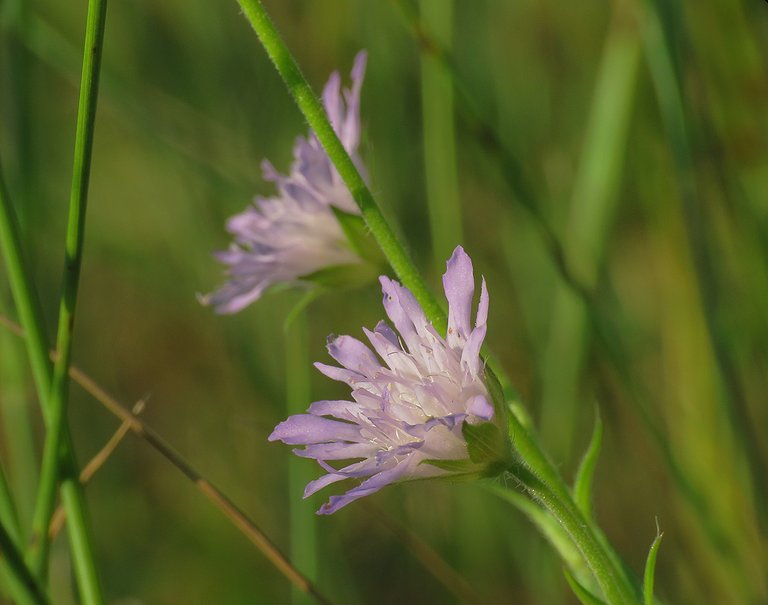
... I stopped to photograph these Knautia integrifolia flowers.
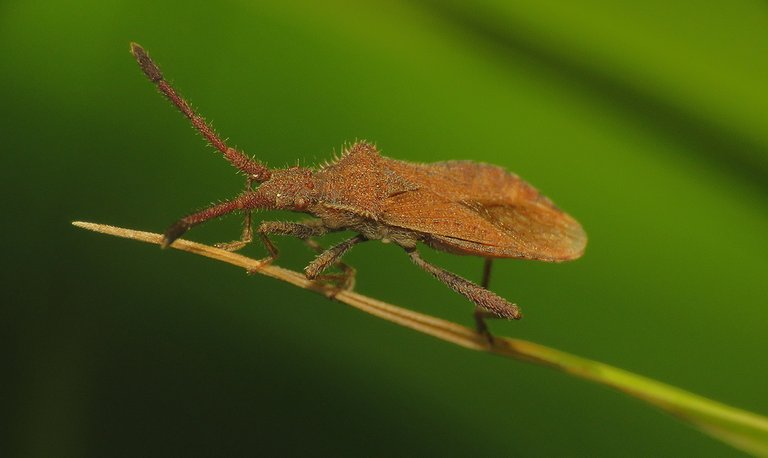
In this photograph, the focus is on the insects again. This is the Coriomeris denticulatus ...
... a species from the Coreidae family. This bug feeds on various clovers and some other related plants from the Fabaceae family.
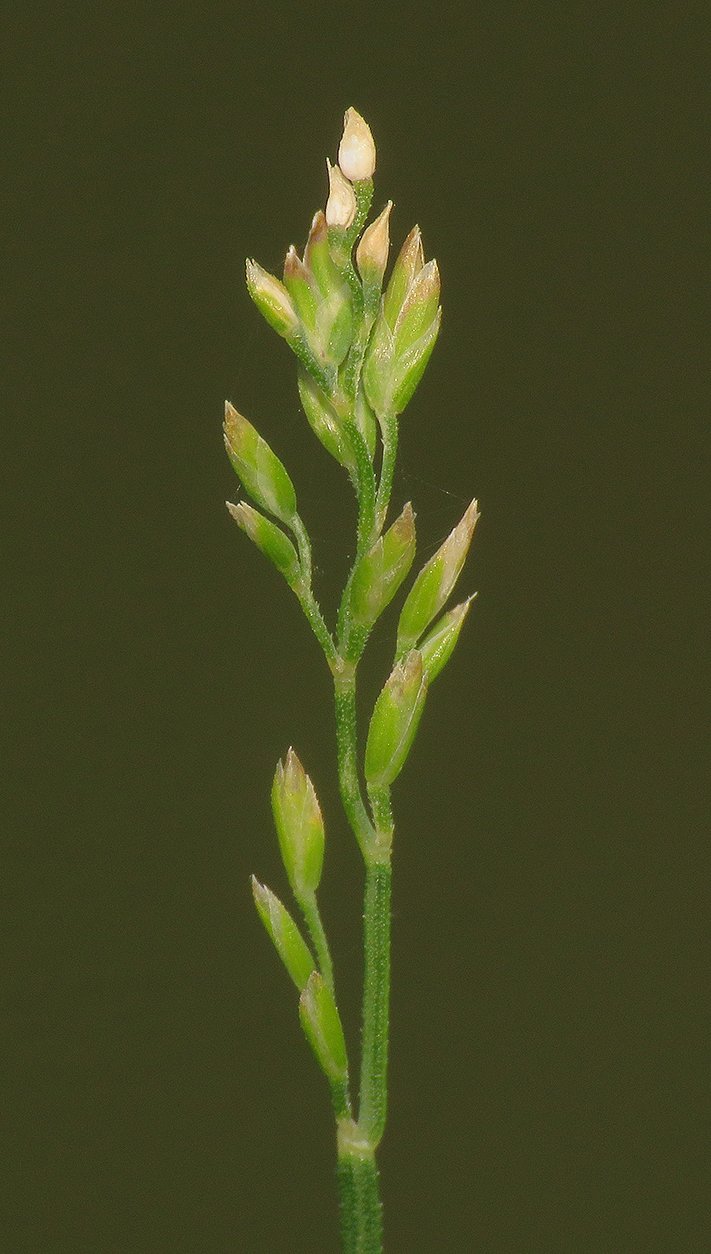
While walking around the meadow, I took another portrait of the Poa infirma, and then ...
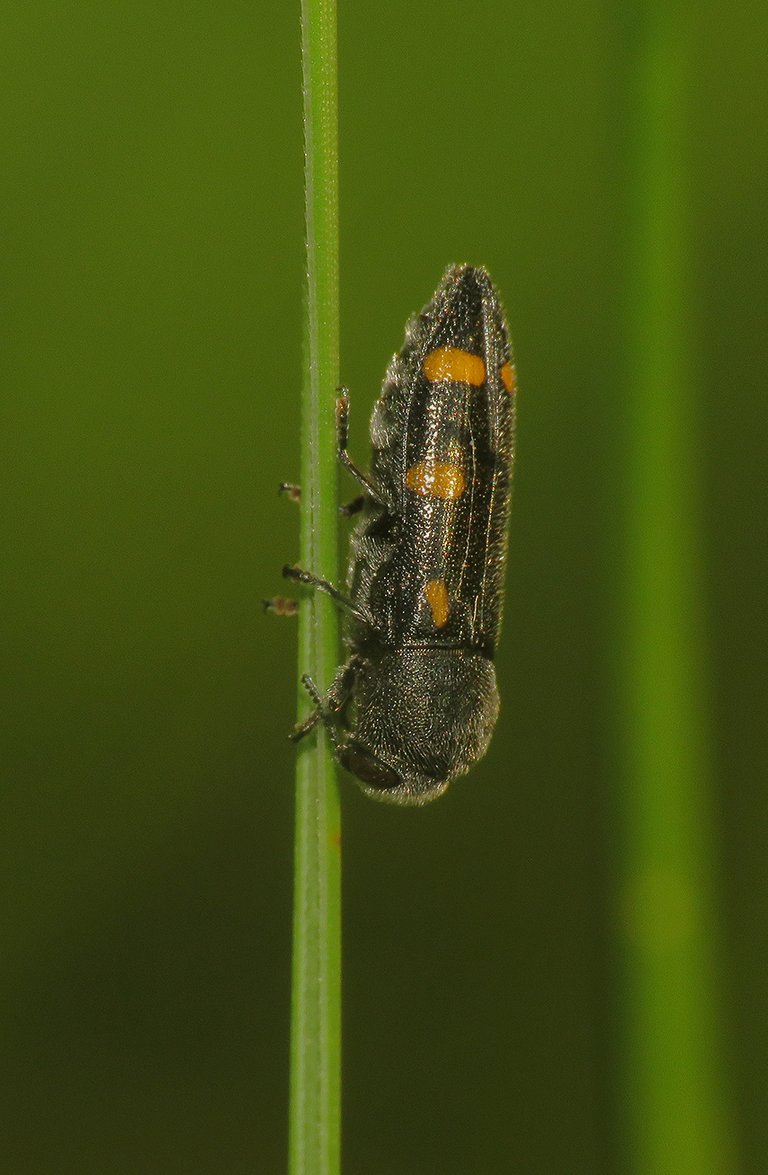
... on the edge of the forest, in the grass under the Prunus spinosa tree, I found another Ptosima undecimmaculata beetle. A meter or two further, always under the shrubs and trees that form the dense wall of intricate vegetation in between the grassy open space and the woods ...
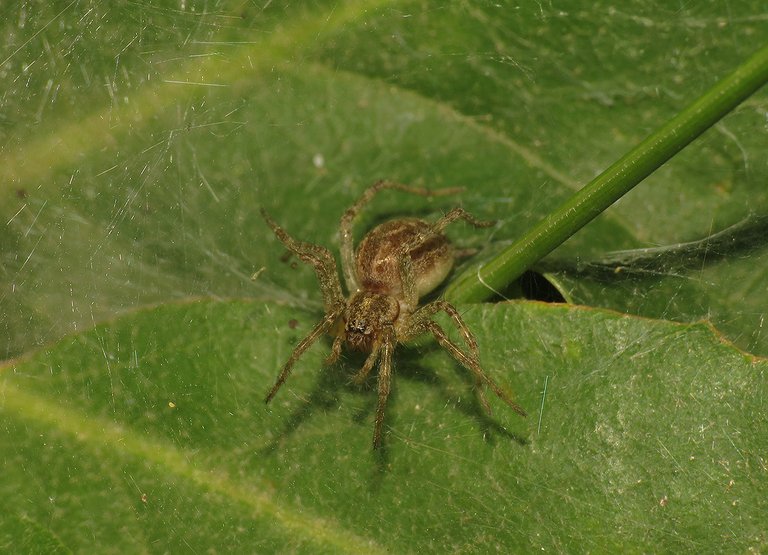
... I photographed this spider from the Agelenidae family. Spiders from that family are commonly known as funnel weavers.
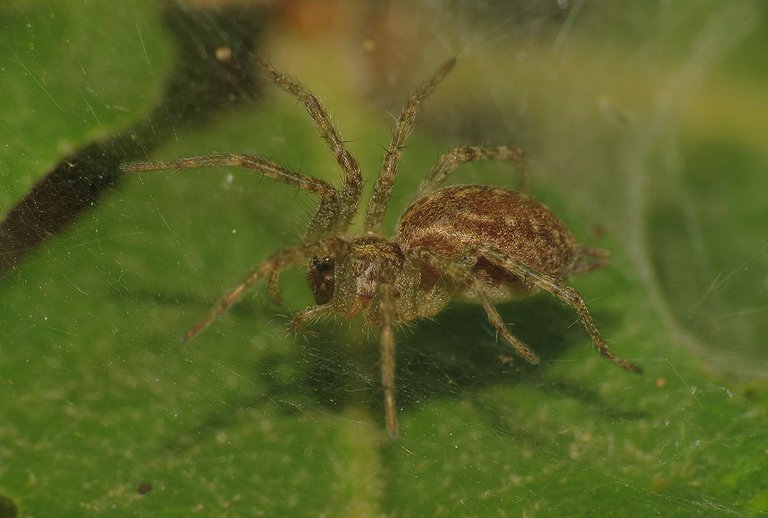
The name of this species is Allagelena gracilens. The following photograph ...

... was taken a little less than a meter above the spider and its funnel web. Here you can see the Leptura maculata longhorn beetle on the flowers of the blackberry shrub that grew climbing around the branches of the Prunus spinosa tree.
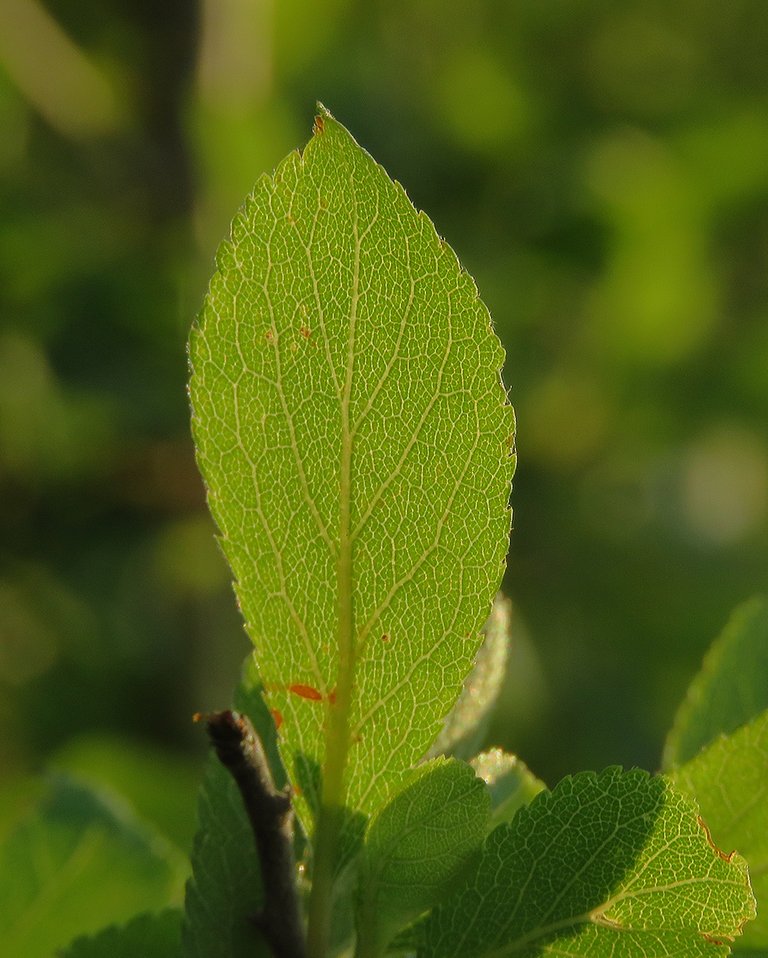
In this photograph, the focus is on one single leaf from that tree.
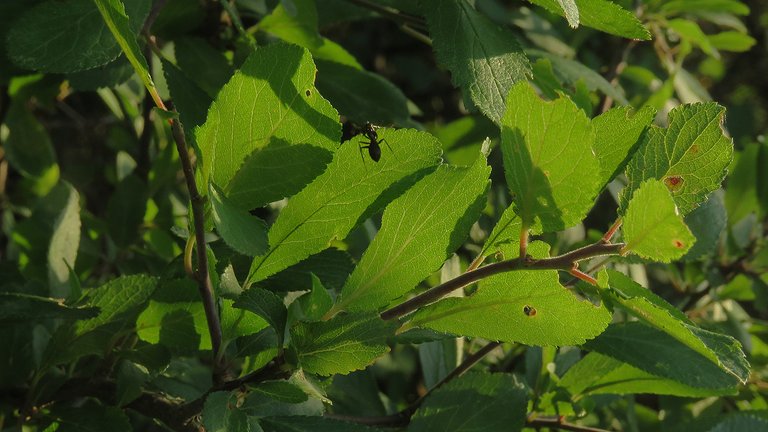
Here you can see more foliage and one ant, all photographed in the light of the late afternoon. At that point, the evening was near ...
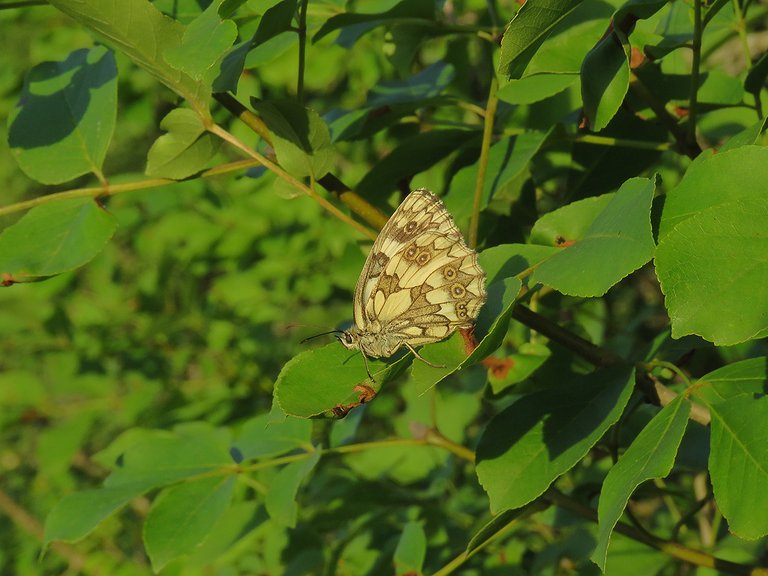
... and some of the butterflies that have spent the hottest time of the day feeding on the meadow, came to the edge of the forest, to rest on the shrubs and trees.
This species, the Melanargia galathea, often behaves that way at the end of the day. The butterfly shown in this photograph was resting on the lower branches, while the one in the following photograph ...

... was observing the surroundings from the top of the Prunus spinosa tree.
On another branch of the same tree ...
... the Runcinia grammica spider was waiting in ambush. This is species from the Thomisidae family. Spiders from that family are commonly known as crab spiders. Not far from there, on another small tree ...
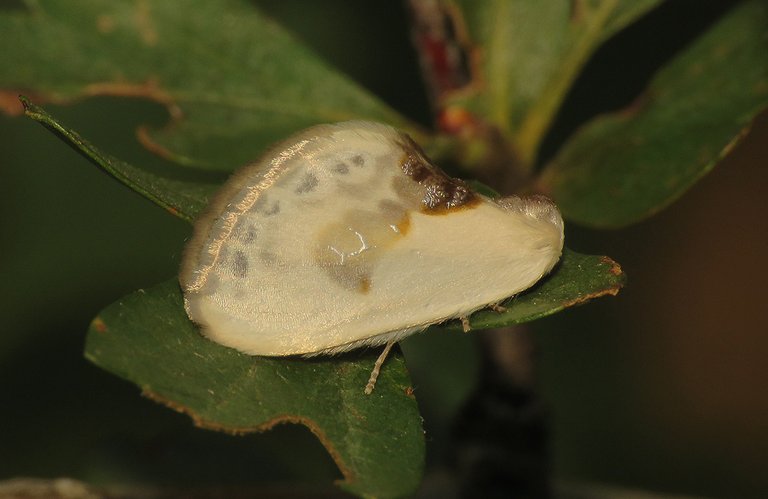
... I found a bird dropping. I mean it looked like tiny excrement produced by a small bird, but when I came closer with my camera ...
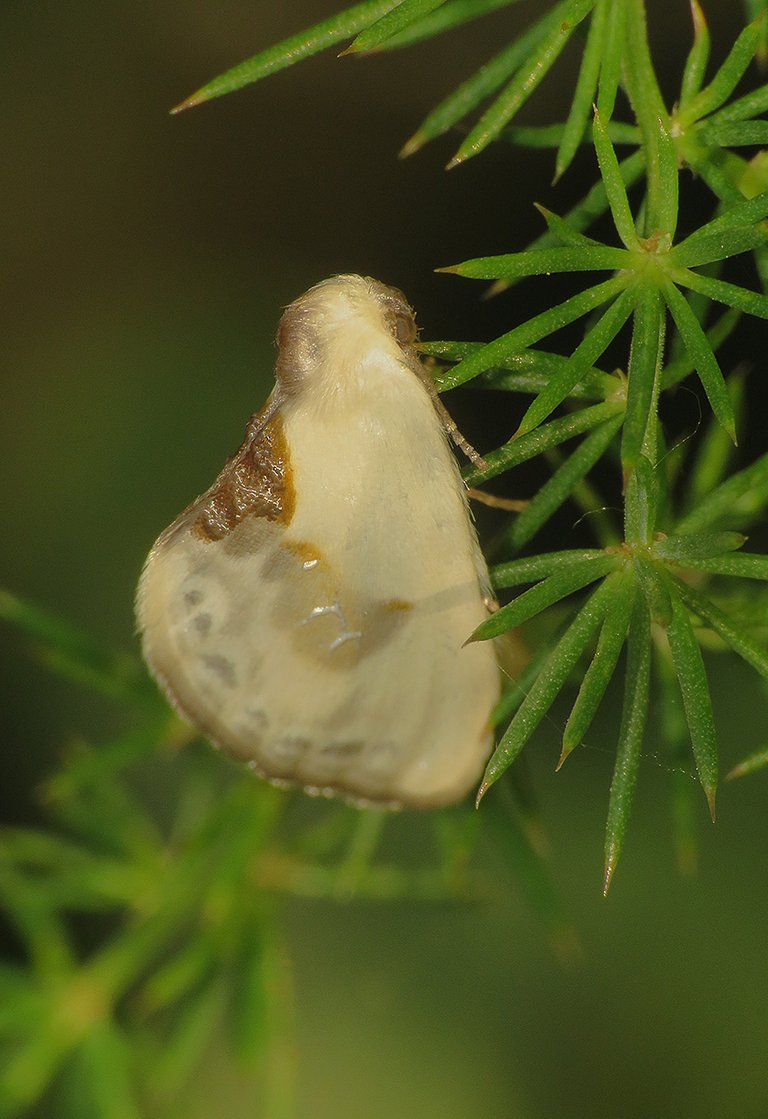
... the dropping flew away and landed on a nearby Asparagus acutifolius plant. From there ...
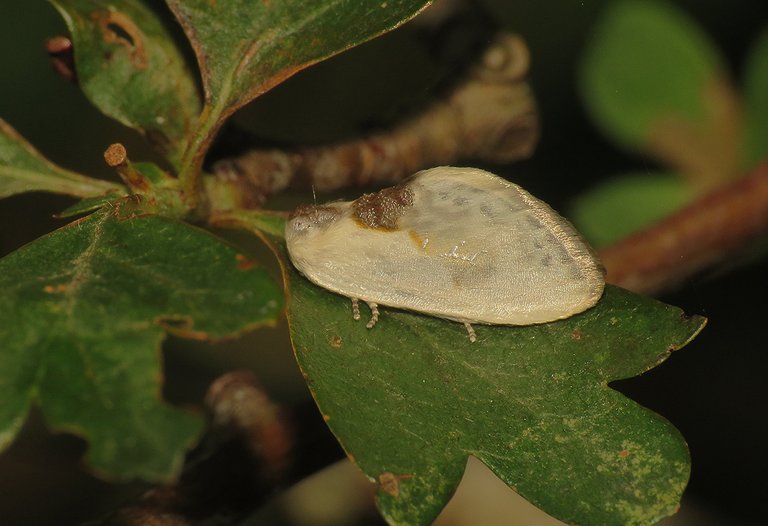
... the small moth flew to the Crataegus monogyna tree. This is the Cilix glaucata, a species from the Drepanidae family. These moths are nocturnal and very hard to find during the day when they rest in a pose that makes them look like an absolutely uninteresting piece of bird shit. The larvae feed on the plants from the genus Rubus (which includes various blackberries), the genus Crataegus (which includes the common hawthorn shown in this post), and the genus Prunus (which includes the Prunus spinosa, one of the main protagonists of the post).
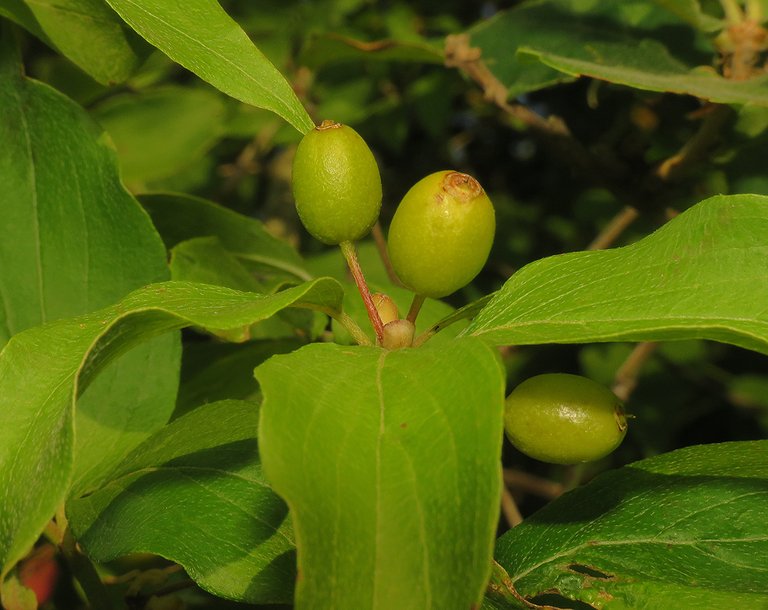
Here you can see the small unripe fruits of the Cornus mas tree. A couple of months later the fruits will be red and edible.
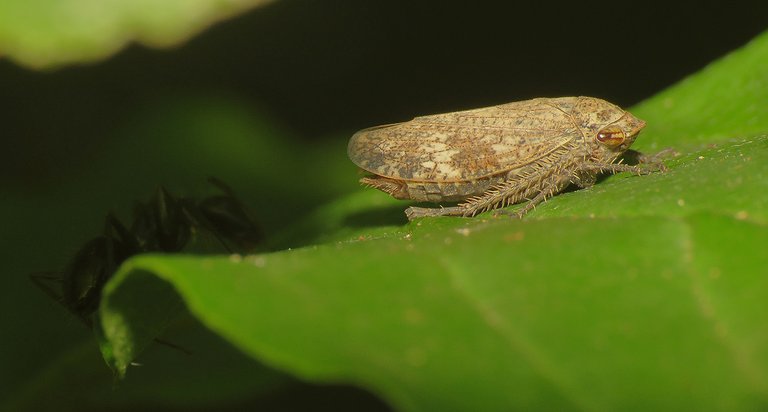
On that small tree, on one of the leaves there, I photographed a leafhopper. The family is Cicadellidae, but with quite a few similar-looking leafhoppers around, I'm not sure about the species. If you take a good look at the photograph, you'll notice an ant that is approaching from behind. In the following picture ...
... the ant is closer. Many leafhoppers produce honeydew, both as adults and in their larval stage. The ant in these photographs is probably waiting for a drop of food produced by the leafhopper.
In this photograph, you can see another leafhopper of the same species. This one is using the foreleg to clean its eyes and the small antennae.
Here you can take another look at the Cornus mas tree.
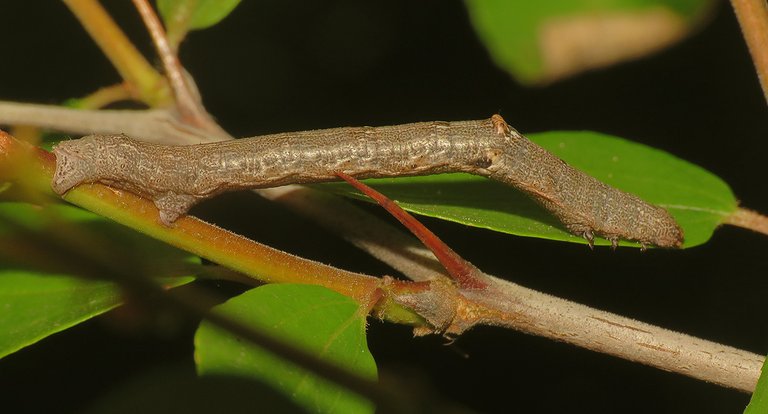
This well-camouflaged caterpillar that resembles a twig was resting on the thorny branch of a nearby Paliurus spina-christi shrub.
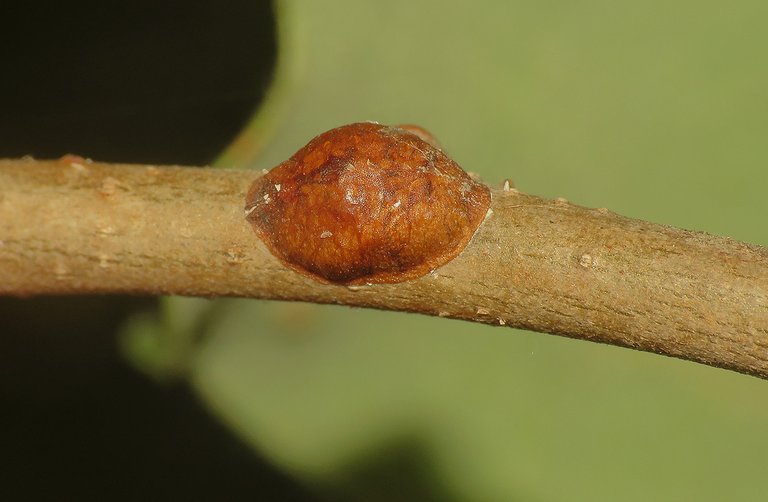
This last little thing was photographed on the oak tree. I don't know what is this. It looks like a scale insect. But who knows?
The following links will take you to the sites with more information about some of the protagonists of this post. I found some stuff about them there.
https://en.wikipedia.org/wiki/Ptosima_undecimmaculata
https://www.plantea.com.hr/trnina/
https://en.wikipedia.org/wiki/Mespilus_germanica
https://en.wikipedia.org/wiki/Poa_infirma
https://www.britishbugs.org.uk/heteroptera/Miridae/Dicyphus_globulifer.html
https://en.wikipedia.org/wiki/Tephritidae
https://powo.science.kew.org/taxon/urn:lsid:ipni.org:names:319392-1
https://www.britishbugs.org.uk/heteroptera/Coreidae/coriomeris_denticulatus.html
https://en.wikipedia.org/wiki/Melanargia_galathea
https://en.wikipedia.org/wiki/Runcinia_grammica
https://www.norfolkmoths.co.uk/index.php?bf=16510
AND THAT'S IT. AS ALWAYS HERE ON HIVE, THE PHOTOGRAPHS ARE MY WORK - THE END.
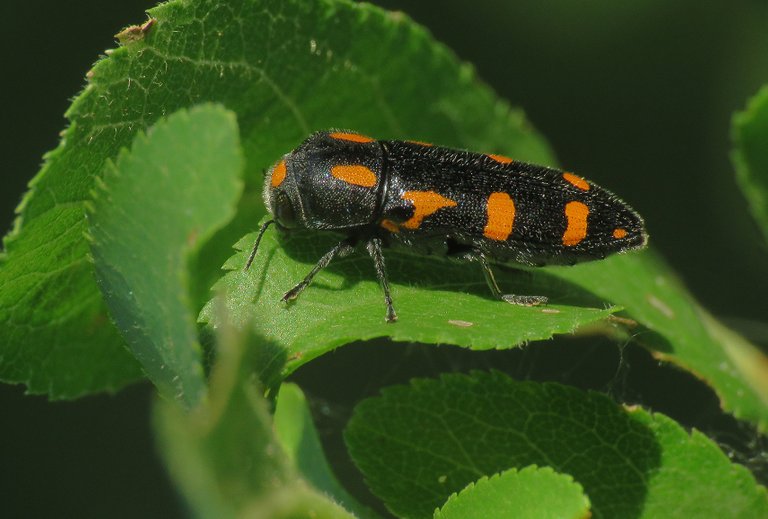


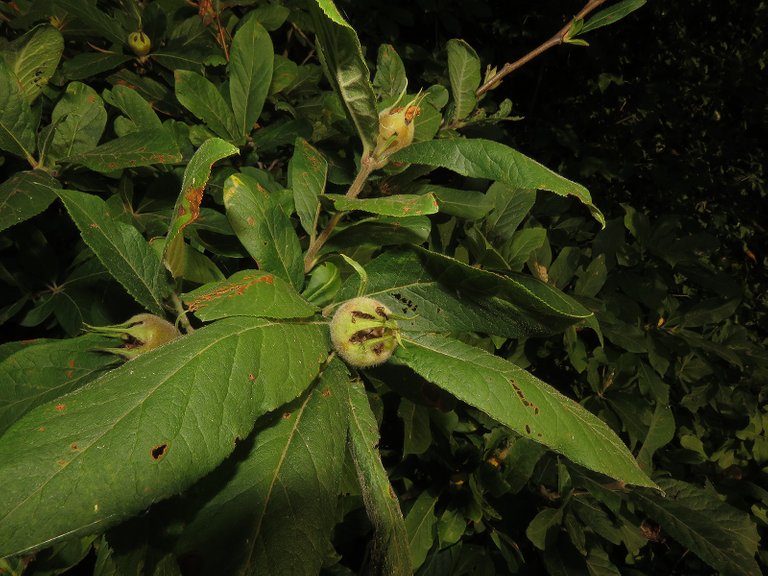

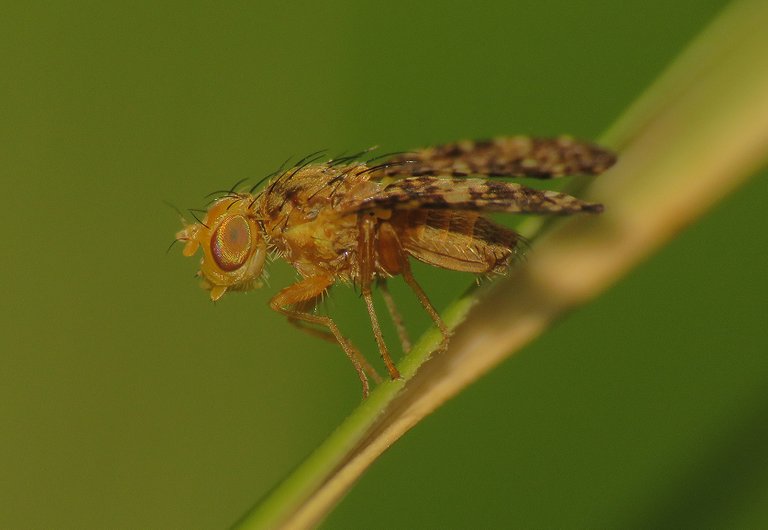

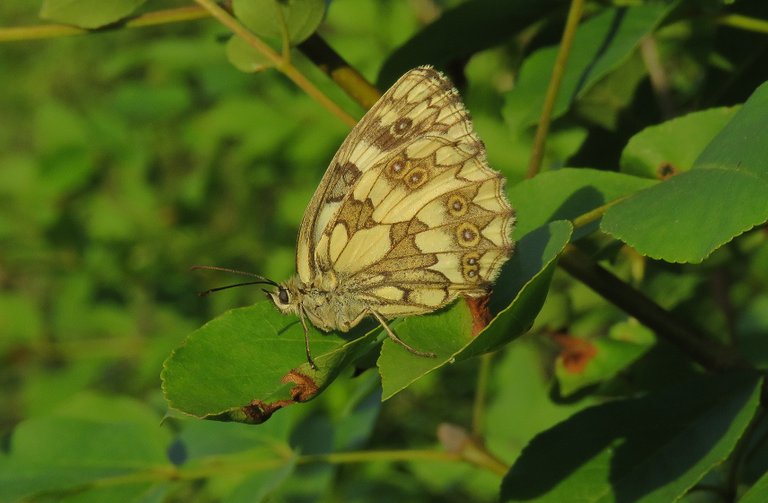
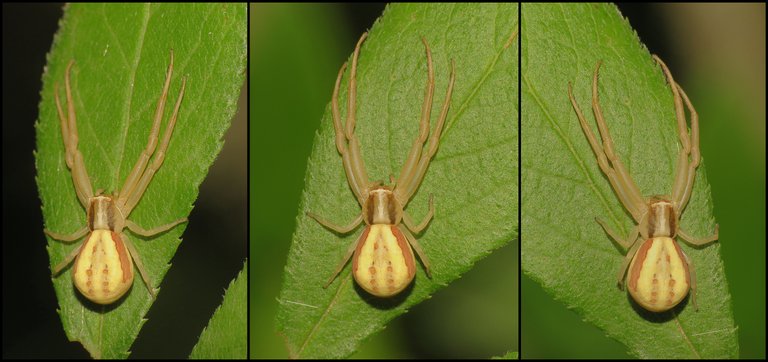
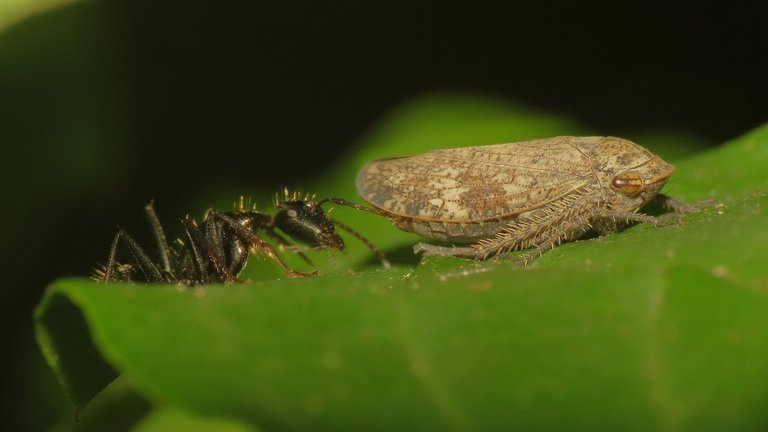
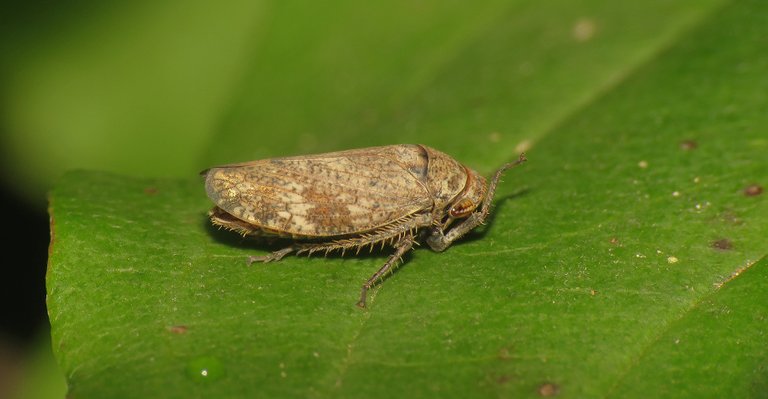
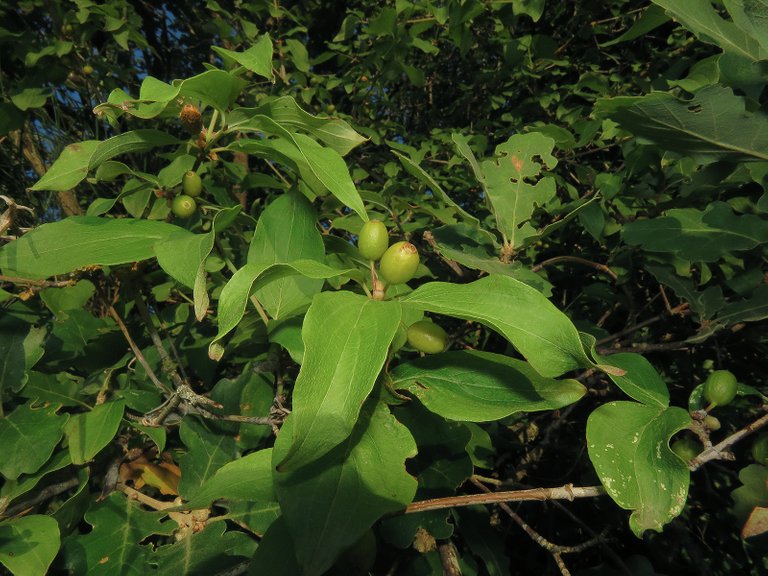
This time there are many close up shots of little insects. I like the caterpillar that is pretending to be a piece of stick, that is very good catch, if you didnot mention I would probably not recognize it.
The jumping spider is just so cute, love seeing them. 🥰
The red and black grasshopper is indeed beautiful and more interesting to look at.
Beautiful captures of all the insects, and so many you find this time.
The moth does look very funny further away and can be easily mistaken for something else.
Great photographs as always @borjan 😊
I found something funny on our wall when I arrived back home. Have to look closer at it as I’m not sure what it is. But looks like a large cocoon of something. We will find out.
Have a great new start of the week 👋🏻😎☀️
🕷️🙂🕷️
That last one looks like a small shell of an insect, that's what I see and think
Wow, It's my first time seeing this type of Crabspider, are they poisonous...?
For insects and other spiders that they hunt - yes. For people - no.
Wow, glad to hear that. 😂
Good hunt Chief...👍
You have photographed almost all the small animals, this is really amazing mate. I really like your work
Wow serangga yabg kamu fotokan sangat detail dan mereka sangat unik
Terima kasih. 🙂 Senang bahwa Anda menyukai foto-foto ini.
Thank you for sharing with us in the Nature Lovers Community
Congratulations @borjan! You have completed the following achievement on the Hive blockchain and have been rewarded with new badge(s):
You can view your badges on your board and compare yourself to others in the Ranking
If you no longer want to receive notifications, reply to this comment with the word
STOPCheck out the last post from @hivebuzz:
That photo of the jumping spider with the bright eyes all focused on you. Made me wonder what people or things look like in its brain.... The Cilix glaucata was certainly an odd looking moth. Great camouflage!
Yes, it has excellent camouflage. And doesn't show its head easily. It was the first time I encountered that moth.
Hehehee, I also often wonder how spiders and insects perceive that giant thing with some strange piece of technology in its hand.
As always, if anyone asks me what photography is, I will show to them always outstanding youre work
Thank you. 🙂 It's a great compliment.
Gladly, sir, and honestly, I say as it is and you deserve it🙏
As always great pictures. That moth really was weird looking. A bird may look and see it's dropping flying around.

The caterpillar was also another insect that was well camouflaged, took me a minute to find it.😂
Dunno what that last picture might be. Maybe the oak tree had a boil.
Yes, it takes a bit to find the caterpillar in the picture 😃 just like in reality.
Congratulations, your post has been upvoted by @dsc-r2cornell, which is the curating account for @R2cornell's Discord Community.
No, I won't say anything amazing today, because every scene seems to have been captured with great care. Another good thing was to try to give an idea about each scene under it. thank you
Thnk you. 🙂Glad you like the post.
Wonderful photos!
Thank you. 🙂 Glad you like the post.
Has sido curado por @visualblock / You've been curated by @visualblock
Bienvenidas delegaciones / Delegations welcome
Encuentra nuestra comunidad aquí / Find our community here
Trail de Curación / Curation Trail
Wow buddy beautiful shots💓😍😍👌
I love your posts because you always post beautiful pictures and write to each one what it represents.
Have a wonderful week.
Thank you. 🙂 Have a great week.
I've never gotten to see this many insects, except in posts like this one.
Thanks for your contribution to the STEMsocial community. Feel free to join us on discord to get to know the rest of us!
Please consider delegating to the @stemsocial account (85% of the curation rewards are returned).
You may also include @stemsocial as a beneficiary of the rewards of this post to get a stronger support.